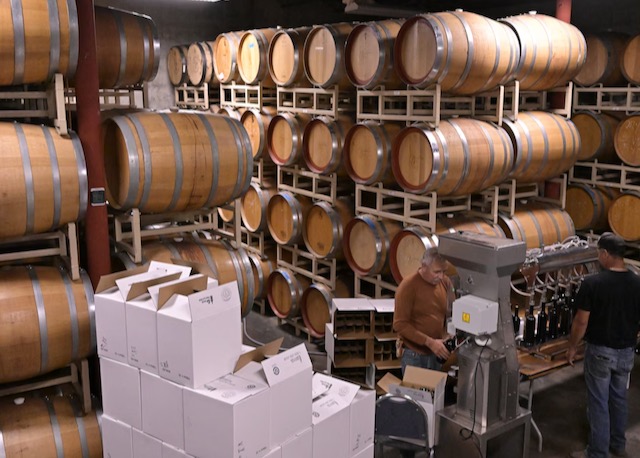“Winemakers are producing better wine,” Balistreri said. “And it elevates the industry as a whole.” Zachary Lewison, a sommelier for the Sonnenalp hotel in Vail, once felt Colorado wines were too sweet. But new variants — especially teroldego, a red grape from northern Italy — and advanced farming methods are changing that for the better, he said.
Lewison has served as a judge for the last three years at the Governor’s Cup, the state’s premier competition of wines made in Colorado. He’s seen more dry wines entered over that period, though the judges — who come from around the country and participate in blind tastings — have also awarded fruit-based wines, honey wines and other traditional varieties.
In 2024, the Best in Show winner at The Governor’s Cup was a red blend from The OBC Wine Project, made from Colorado-grown teroldego, chambourcin and cabernet franc grapes. The Palisade and the West Elk regions near Paonia supply nearly all the grapes used by Colorado wineries. Annual yields are extremely dependent on the weather. Rapid temperature swings can kill grape vines en masse, as they did in 2020 and 2021.
To supplement their product, some Colorado wineries buy grapes or even wine from California and Washington. The Balistreris do this for some of their wines, though others are made exclusively with Colorado grapes.
The sourcing of out-of-state grapes is a sour topic among growers. Many feel it dilutes the identity of Colorado wine, while at the same time, they understand the necessity of doing so in order to make wine a sustainable industry in the state. “It doesn’t mean that the wines are bad,” Lewison said.
The last two growing seasons have shown favorable conditions and led to a rebound in yield, said Dr. Charlotte Oliver, a viticulturist with Colorado State University.
“We’ve been pretty lucky, and that’s what I call it: lucky,” Oliver said. “Because we have no control over the weather.”
It’s unclear whether a warming climate will improve growing conditions in Colorado’s main growing valleys, the Front Range and the Four Corners area. Research presented by Oliver and her colleague, state viticulturist Dr. Horst Caspari, projects climate trends that could benefit growers while disclaiming extreme weather events can become more unpredictable and pose unprecedented hazards.
Oliver and her colleagues stay in touch with winemakers and share their studies on diseases that could harm grape vines. They hope to hire someone with industry experience to take on a more technical role, using the language of wine to describe taste, color and other characteristics.
Newer wineries such as Carboy, Sauvage Spectrum and The Storm Cellar have also illuminated the industry, making sparkling wines and other products aimed at winning over non-connoisseurs. Oliver mentioned one Carboy wine made with La Crescent — a white, cold-hardy grape — that she said tastes like a Coors beer. The Balistreri family makes wine without additives or sulfites, earning the broad classification of “natural” wine. They buy grapes from ten growers in the Western Slope and ship them to be crushed, aged and bottled at their estate in north Denver.
In 2023, the Governor’s Cup awarded Balistreri Vineyards a gold medal for its bottle of teroldego, picked from Talbott Farms in Palisade. Awards are a source of pride, Balistreri said, though she knows they’re subjective. “It means somebody liked that wine that day,” she said.


